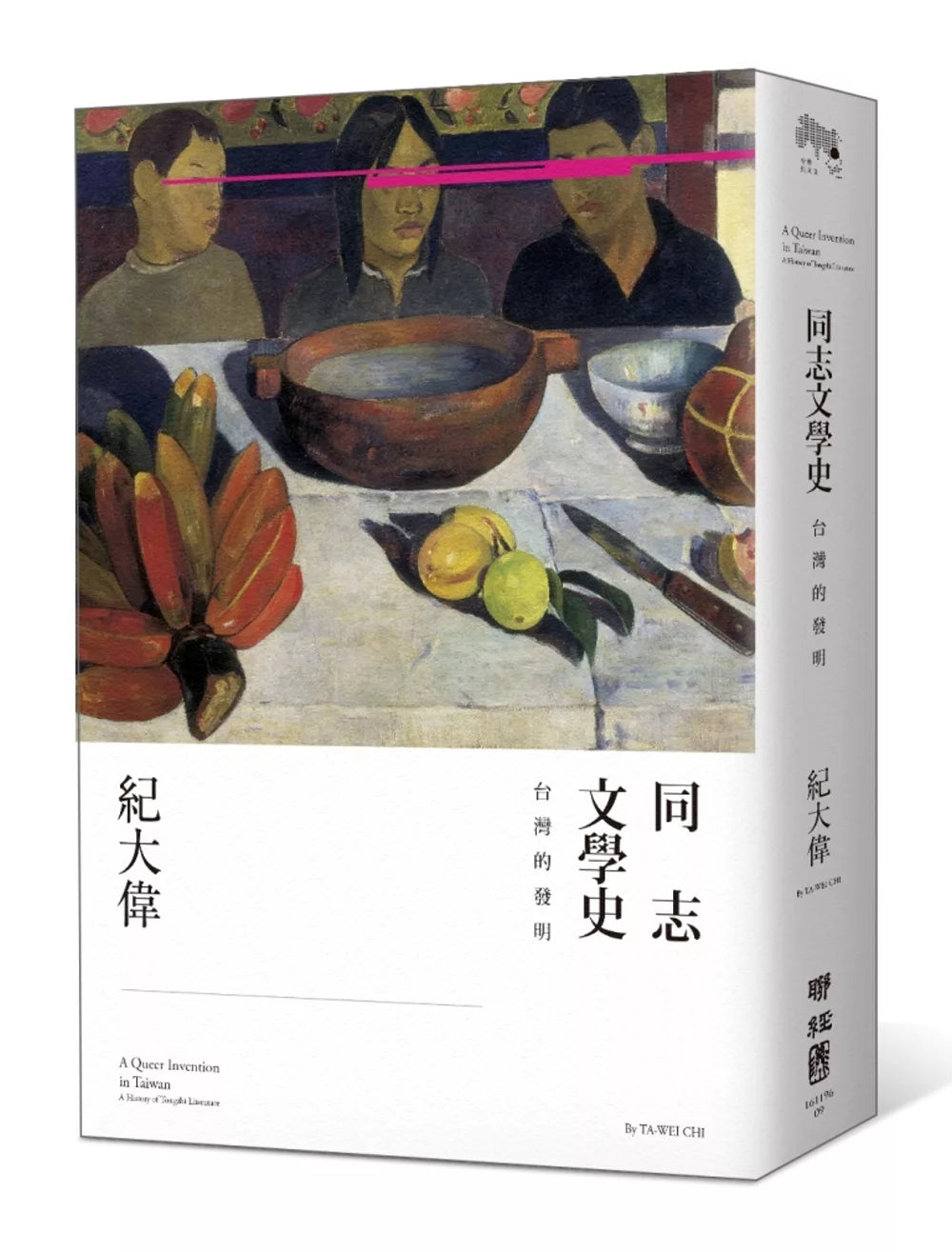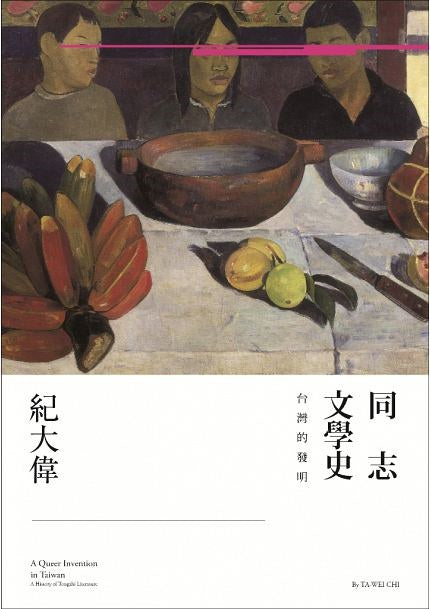1
/
of
2
History of LGBT Literature
History of LGBT Literature
Ji Dawei
Regular price
$34.99 USD
Regular price
Sale price
$34.99 USD
Unit price
/
per
Low stock
Couldn't load pickup availability
About Book
About Book
A Queer Invention in Taiwan: A History of Tongzhi Literature
The history of LGBTQ literature is a Taiwanese invention. "A History of LGBTQ Literature: A Taiwanese Invention" provides a comprehensive overview of the development of LGBTQ literature in Taiwan!"Gay literature" is "literature that allows readers to feel the people, things, and events"
"History of gay literature" is "public history based on gay literature"
Public history is an alternative memory that differs from mainstream historical perspectives. The great treatise "A History of Gay and LGBT Literature: The Invention of Taiwan" traces a six-decade span of Taiwanese public history, from the US-dominated Cold War era of the 1950s to the post-Cold War era of the early 21st century, detailing various types of Taiwanese LGBT literature, including novels, short stories, essays, poetry, and drama.
A History of Gay and Lesbian Literature is an alternative cultural history work that differs from mainstream history and frequently asks:
How did an "imagined community" of homosexuality emerge in the 1950s, long before Pai Hsien-yung entered the Taiwanese literary scene?
When Pai Hsien-yung was at the height of his fame in the 1960s, how did his literary predecessors and peers depict the subjectivity of other comrades in their works?
In Taiwanese literature of the 1970s, when women were trying to pair up with the same sex, how did men of the same period explore the "inner" America?
In the 1980s, how did the emerging "nuclear family hegemony" and humanitarianism work together to give rise to the tragedy of homosexuality?
After foreign words like "AIDS," "homosexual," and "queer" entered Taiwan at the end of the century, how did they interact and rewrite the local context?
In the 21st century, how will Taiwanese gays transition to "liquid modernity"?
For sixty years, Taiwanese LGBTQ+ literature has been filled with the unspeakable secrets of fear, exclusion, insult, destruction, and secret blessings. Ji Dawei's "A History of LGBTQ+ Literature" is a cat-like, tiptoeing tracing back this unspeakable journey. The book's proactive approach to selecting texts for discussion is "to pursue quantity over quality," rather than "to pursue quality over quantity." Each chapter roughly corresponds to a specific era (e.g., the 1960s). Each chapter avoids focusing on a narrow, elite group of two or three Taiwanese LGBTQ+ writers from that era, instead emphasizing the inclusion of at least ten texts from that era to capture the cacophony of voices within each era.
The Taiwanese literature cited in "A History of Gay and Lesbian Literature" dates back to the early 20th century and into the early 21st century. For over a century, Taiwanese printed texts that "represent homosexuality" (including both literary works considered fine literature and social news in newspapers that are not considered literary works) have been present in almost every era. Printed works that represent homosexuality have a history spanning over a century. This book details a sixty-year history (six decades), including (1) the 1950s; (2) the 1960s; (3) the 1970s; (4) the 1980s; (5) the end of the century; and (6) the beginning of the 21st century, spanning three periods: (1) the pre-Cold War period (from the early 20th century to the 1940s, when Japan ruled Taiwan), (2) the Cold War period (from the 1950s onwards, when the Kuomintang ruled Taiwan), and (3) the post-Cold War period (from the end of the 20th century to the beginning of the 21st century).
This book consists of eight chapters. Chapter 1, "Introduction: A Taiwanese Invention," succinctly states that "LGBT literature history is a Taiwanese invention," emphasizing that LGBT literature can be considered not just a genre but also a field: a field that values readers alongside authors and fosters a vibrant dialogue between texts. This chapter also illustrates that LGBT literature history is a form of "public history" distinct from mainstream history.
Chapter 2, "Paik Hsien-yung's Predecessors and Peers—From the Early 20th Century to the 1960s," points out that while Paik Hsien-yung is a pioneer in the history of LGBTQ+ literature in Taiwan, pioneers also have their own predecessors and peers. Long before Paik Hsien-yung, there were various predecessors involved in homosexuality.
Chapter 3, "Money-Driven Partnership: Lesbian Relationships in the 1970s," notes that Taiwanese lesbian literature didn't emerge in large numbers until the 1970s. Although lesbian news had been reported in newspapers during the Japanese period and the early postwar period, the lesbian literary movement didn't emerge until the 1970s. This literary movement echoed the changing economic status of women in real life: thanks to the Cold War's globalization, Taiwan became a contract manufacturer for the United States, experiencing an economic boom in the 1970s. Taiwanese women flocked to factories and workplaces, gaining greater economic autonomy and beginning to imagine a life of lesbian partnerships.
Chapter 4, "Who Has Time for America—Gay Men in the 1970s," finds that "America" has finally made its long-awaited appearance in Taiwanese literature: Although Taiwan was under long-term US domination after the war, and the literature of the 1960s already showed traces of American "modernism," it was not until the 1970s that local literature began to explicitly write about "America," linking "alternative people" (gay men) with "alternative spaces" (the United States), implying that "alternative people" can only survive in an "alternative country."
Chapter 5, "Quanjia to Live as a Human Being—1980s," argues that the phenomenon of "homosexuality quitting home" marked a dividing line in the late 1970s: before this dividing line, homosexuality in Taiwanese literature rarely conflicted with family; after this dividing line, the break between homosexuality and family in Taiwanese literature almost became an iron rule.
Chapter 6, "Translating AIDS, Homosexuality, and Queerness—End of the Century," covers the historical transition from the Cold War to the post-Cold War era, emphasizing that the phenomenon of "the rise of gay literature in the late twentieth century" can be attributed not only to the lifting of martial law in 1987, but also to the "translation experience" of the word "AIDS" and related contexts.
Chapter 7, "Solid or Liquid Gay Modernity: The Early Twenty-First Century," draws on sociologist Zygmunt Bauman's concept of "liquid modernity" to explain the changes facing gay literature: the rise of "decentered" liquid modernity and the continued decline of solid modernity centered on existing institutions.
"Postscript: Where is China?" is not so much about discussing the relationship between "gay literature" and "Chinese literature" as it is about pointing out a less discussed fact: the development of gay literature over the past few decades has precisely witnessed the "presence/absence" of "China" as the times change.
Publication Date
Publication Date
2017-01-25
Publisher
Publisher
聯經出版公司
Imprint
Imprint
Pages
Pages
520
ISBN
ISBN
9789570848755
share



